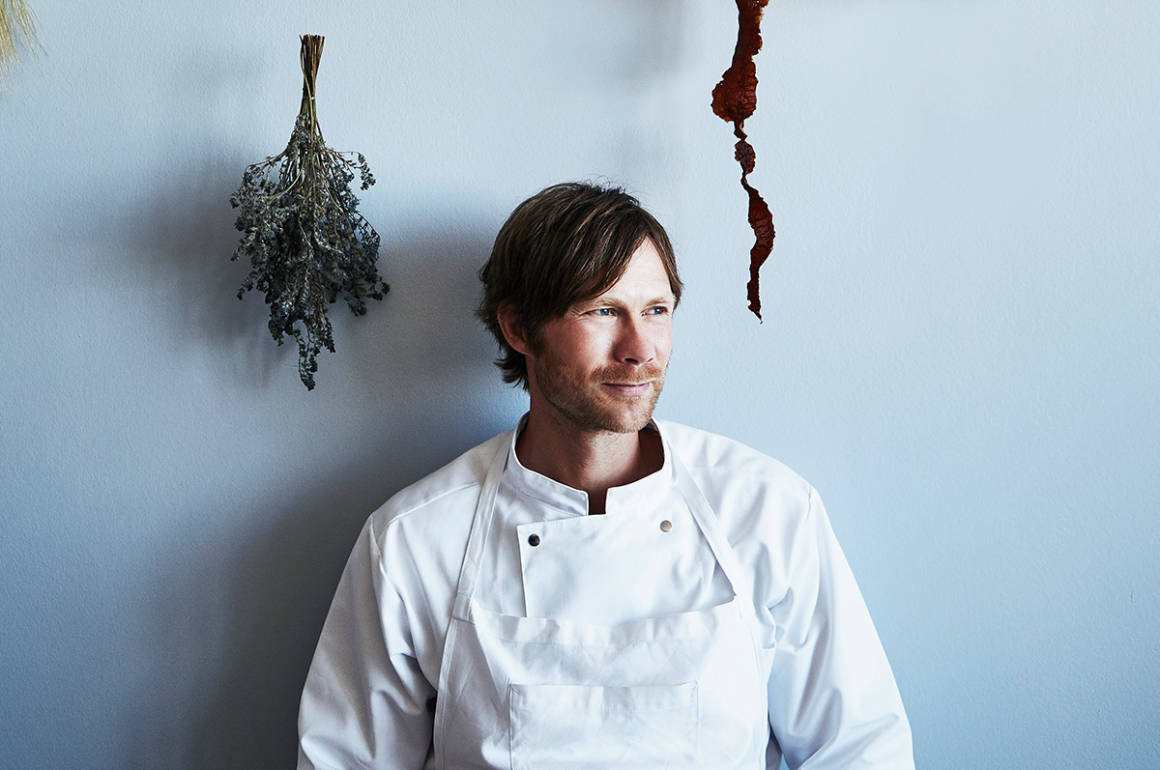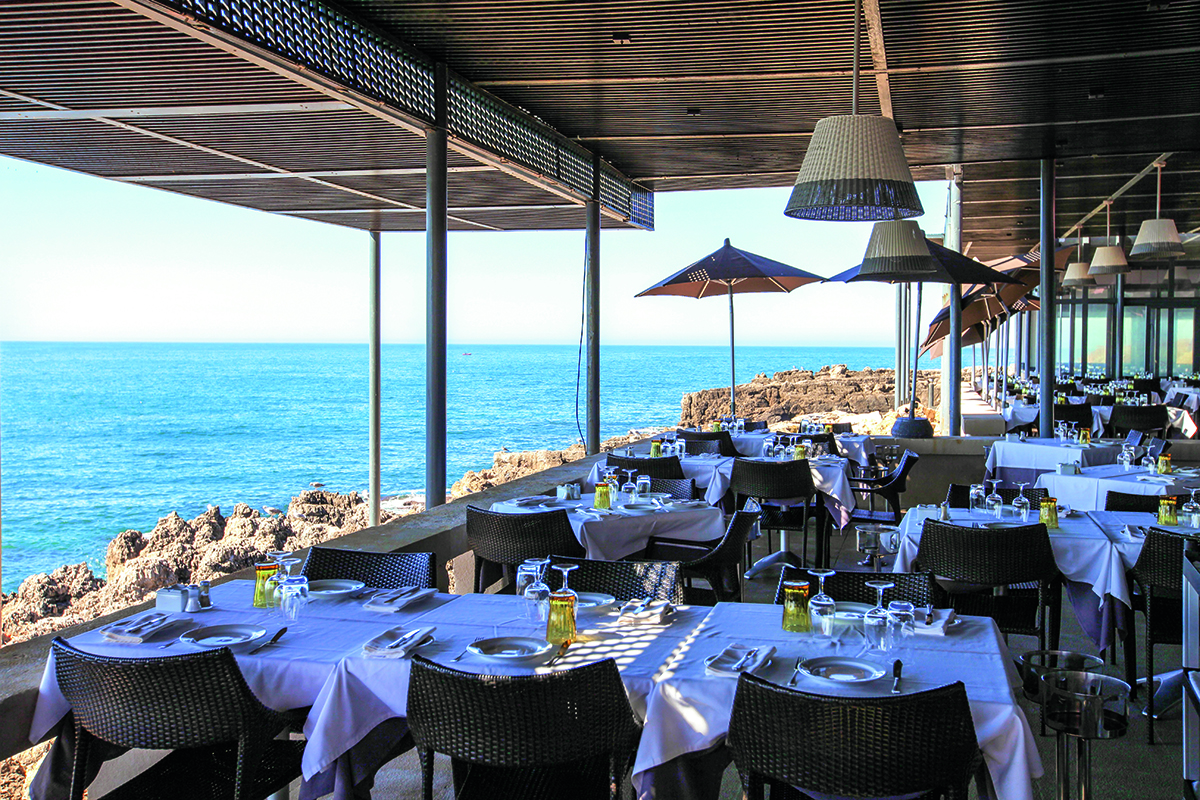
Geranium Head Chef, Co-owner, Rasmus Kofoed. Photo Credit Claes Bech-Poulsen
Rasmus Kofoed, star chef of three Michelin-starred Geranium in Copenhagen, is influencing an entire generation of young chefs to feel confident in offering haute cuisine based on strictly vegetarian principles. During the pandemic, he temporarily opened Angelika, a restaurant within Geranium, with a wholly plant-based menu.
LUX: After bronze and silver, how important was it to you to finally win the Bocuse d’Or?
Rasmus Kofoed: I did it because I wanted to win; that was the first priority. Winning was great, but I enjoyed the process leading up to the competition very much. You develop, you create new ideas, you optimise what you do. It was everything around the competition that I enjoyed.
LUX: What did you change between winning the bronze in 2005 and the gold in 2011?
RK: I think I was more confident with what I loved to cook and eat myself. It was totally based on Nordic and Danish ingredients, like wild forest garlic, elderflowers and lump fish roe. We had just opened Geranium at the same time as I won the competition and a lot of the elements that I made at Geranium I used in the competition, just combining them in a new way.

desserts at Geranium including milk chocolate and rose hip petals, and chocolate egg and pine
LUX: Having won the gold, and with a three Michelin-star restaurant, do you have any unfulfilled ambitions left?
RK: Not really. Of course, I enjoy achieving those prizes, and the motivation is very good for the team as well, but I enjoy the training. I also enjoy the days which focus on the work leading up to creating a great experience for the guests. I don’t think about the awards when I’m here. I think more about how we can optimise everything and how we can work better with the team, and create a better work–life balance. That’s the priority. If you’re happy, it’s easier to make others happy.
Follow LUX on Instagram: luxthemagazine
LUX: What does a better work–life balance for the team look like?
RK: We just focus on it a bit more. We did not let anyone go because we wanted to keep them; they are a part of the future and we believe in them. Another thing is to try to balance all the working hours, eat a lot of vegetables. They also have gym memberships and that’s very important. It’s not a secret – if you feel good, it’s easier to make others feel good.

The dining room at Geranium
LUX: Do you think that vegetarian restaurants like Angelika will be the way forward, given the climate crisis and the pressure to reduce meat?
RK: I think so, and that’s why I opened Angelika. It was a year ago and I could not just go back and open Geranium like we normally did. I felt that, after the first lockdown, we needed to do something different. I’d been on a plant-based diet for the last year and a half, so I was very much into that way of cooking, which is not easy, but when you can do it, it just feels good. I also wanted to pass on my love and care for the planet, and health, to other people. That’s why we opened Angelika: to inspire people to eat more vegetables.
LUX: How has your relationship with sustainability evolved over the years?
RK: I live in the countryside, so I am very close to the forest and to the sea, the ocean and nature, which I really enjoy. It’s very peaceful to go out there and I think it’s something we all need to do sometimes.
I focus a lot more on it at home, but it’s something we care a lot about at Geranium. You can always be better, but we use a lot of biodynamically farmed vegetables, and in that way of farming you give good energy and vitamins back to the soil, not just take them out, and that’s a good mentality, to treat Mother Earth with respect.

Crispy Jerusalem artichoke leaves and pickled walnut leaves
LUX: Where did your love of working with vegetables stem from?
RK: I was raised eating biodynamic vegetables because my mother was vegetarian and she wanted to give the best and healthiest food to her kids. It’s something I’ve been using for a long time, not because it’s trendy, or for PR. I do it because I care and think it’s important to look after the planet. At Angelika, the idea was very much ‘from kitchen to table’, not spending a lot of time plating. At first, it was difficult for the chefs, because they’re used to working with tweezers and taking their time, but you need to be faster, otherwise you lose the energy in the food.

Grilled lobster, elderflower and dried onion
LUX: How did the pandemic affect you professionally?
RK: If it wasn’t for the pandemic, we would have never opened Angelika. It was because of the lockdown that I was saying that we need to open a plant-based restaurant. Since I was on a plant-based diet myself, I wanted to show people that plant-based cooking can be delicious and healthy at the same time, and that you can actually have a great meal, and feel good in your body after. A lot of horrible things happened because of the lockdowns and the coronavirus, but Angelika was this green shoot growing out of the dark times.
Read more: Chef Clare Smyth: Core Célèbre
LUX: What legacy do you hope to leave on the culinary world?
RK: I do it because I love my craft. I love to be in the kitchen, with the energy, the flavours. I love creating new ideas, new ways to serving things. I enjoy cooking delicious food, but I also enjoy eating something which is good for my spirit, my body. As the ancient Greeks said: “Food should be your medicine, and let the medicine be your food.” I love to inspire with my love for the green kitchen.
Rasmus Kofoed is head chef and co-owner of Geranium in Copenhagen. Angelika is temporarily opening on special dates.
This article appears in the Summer 2022 issue of LUX













Recent Comments